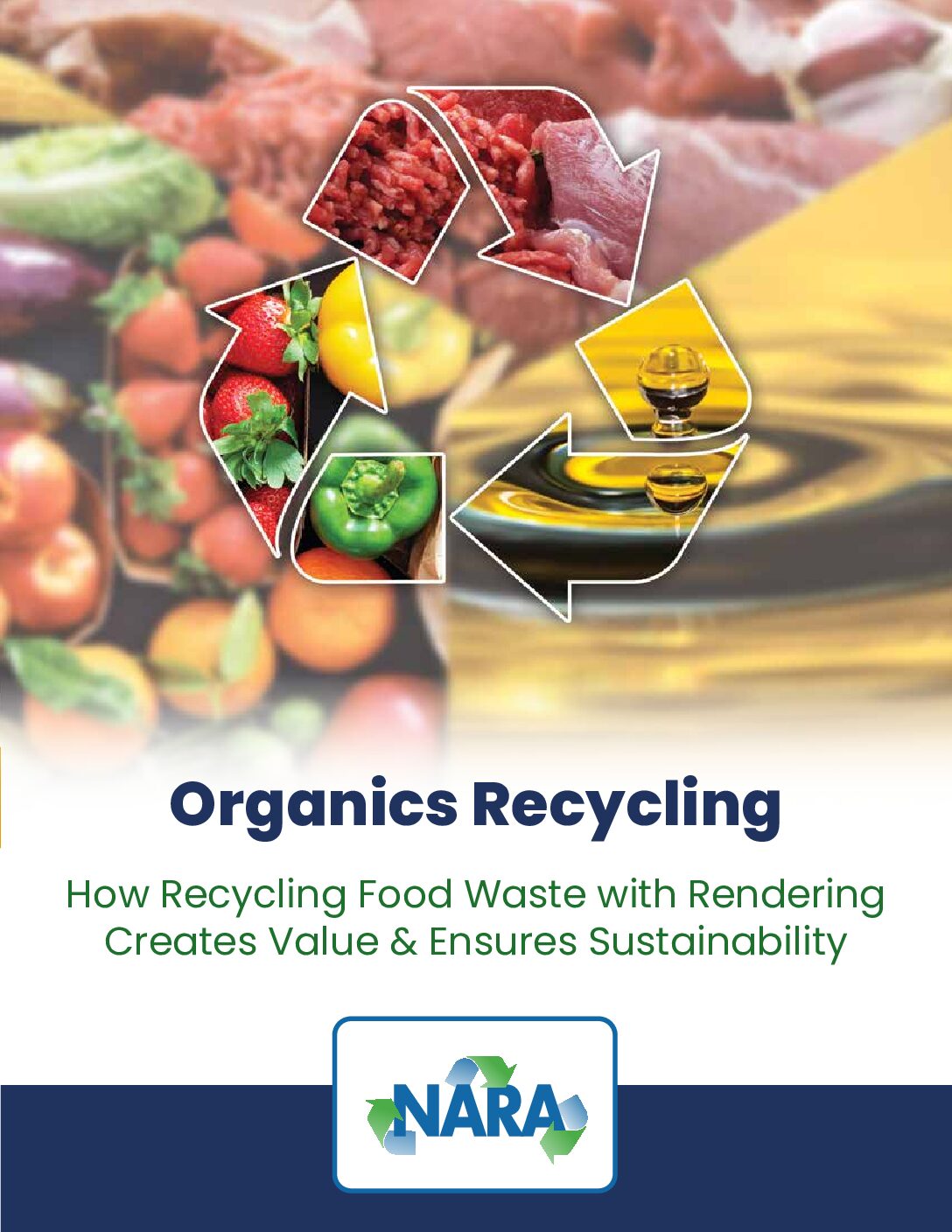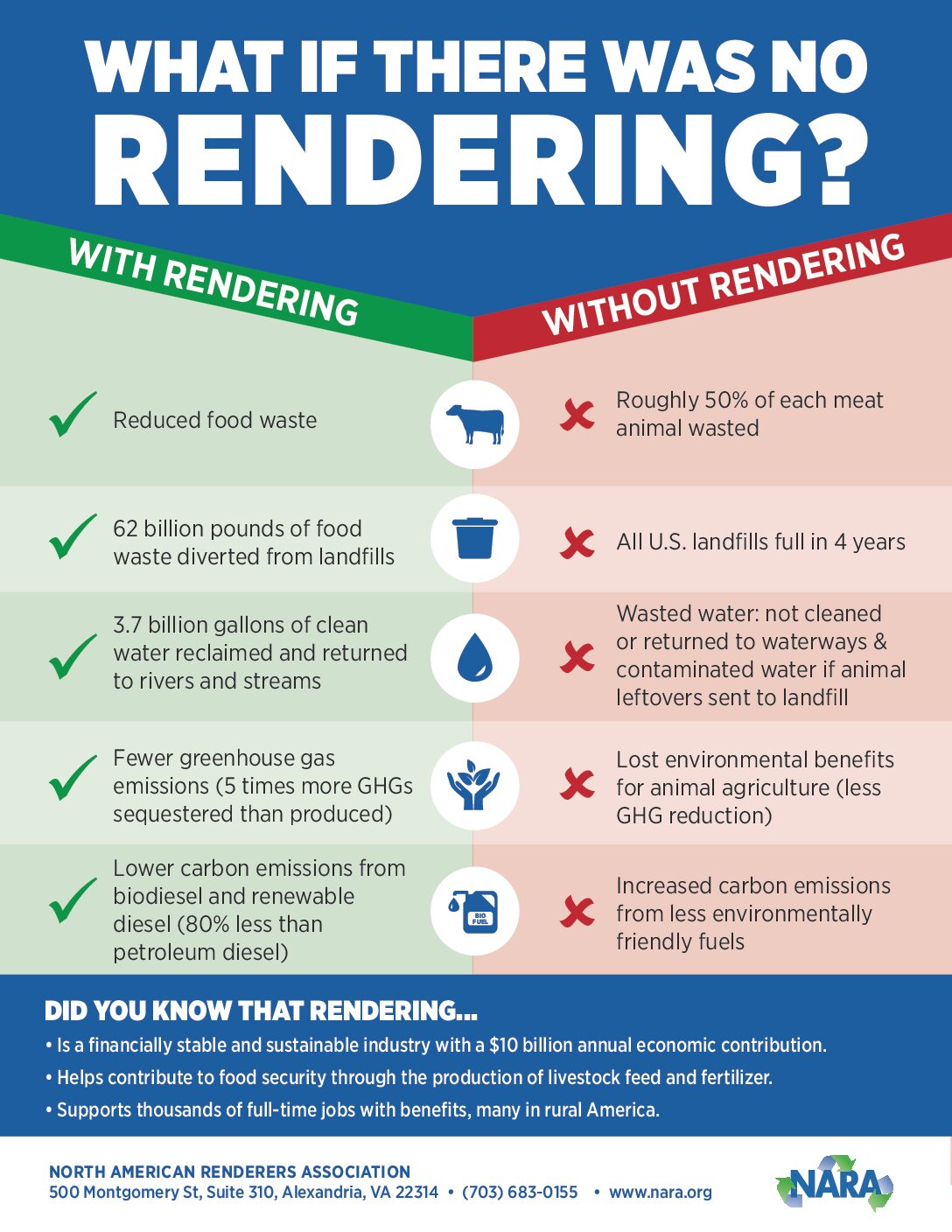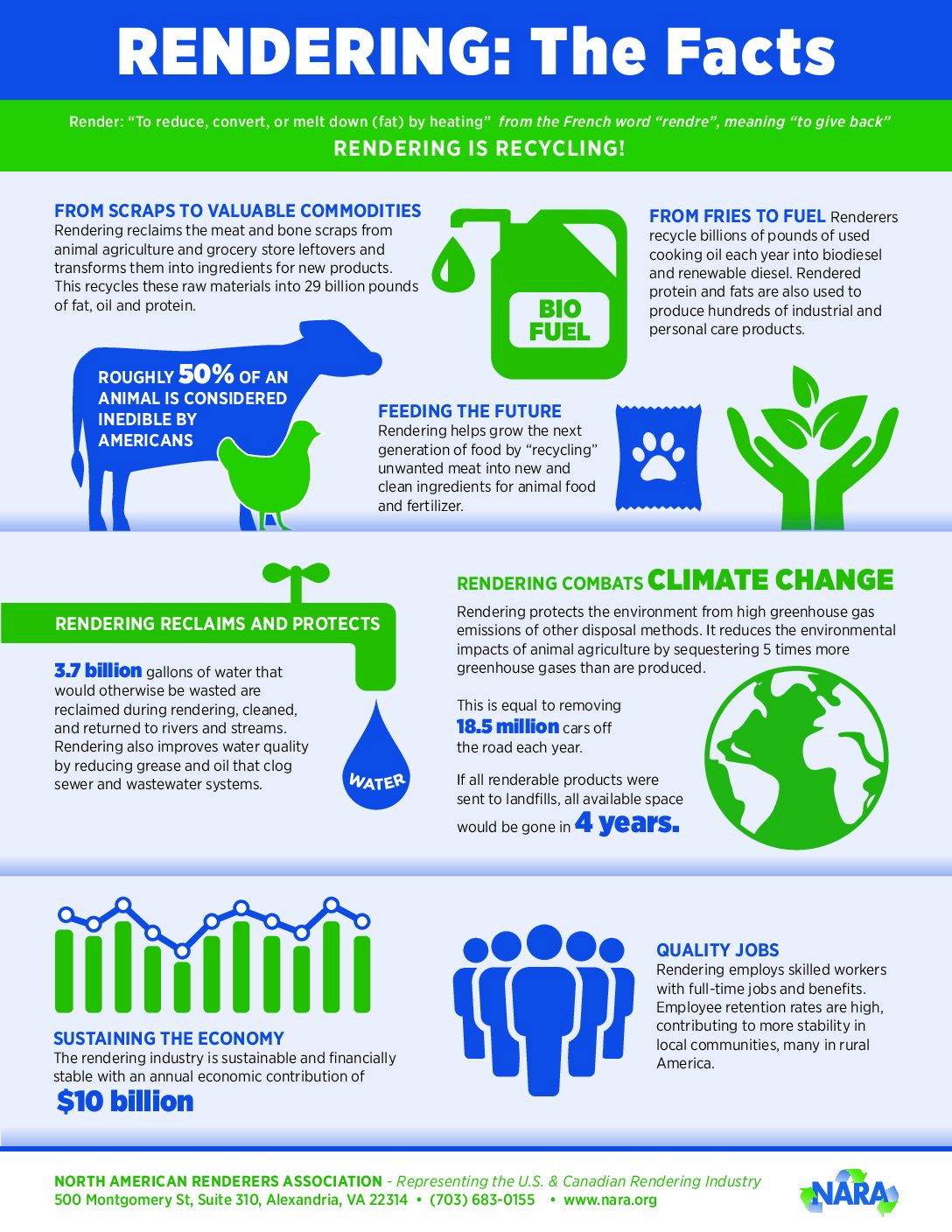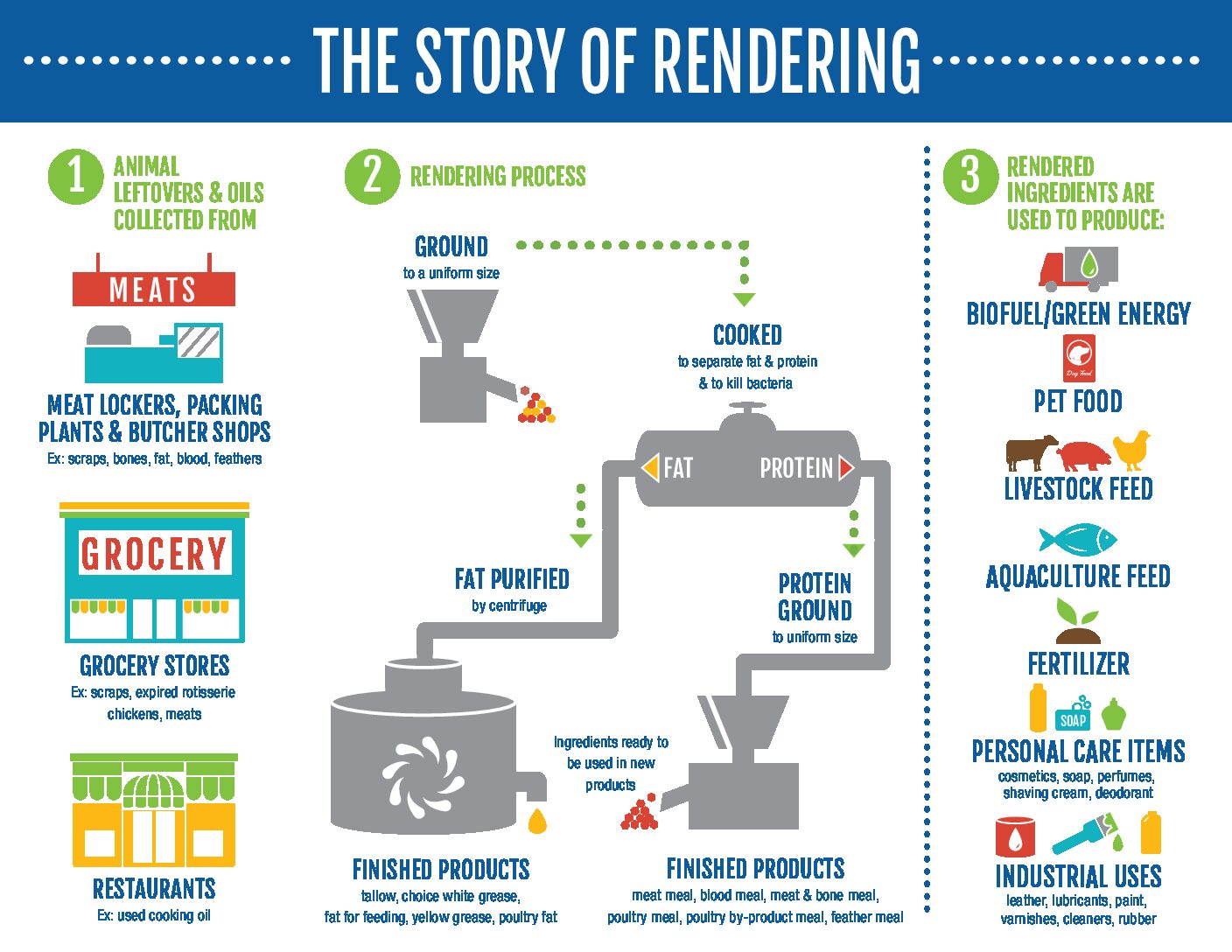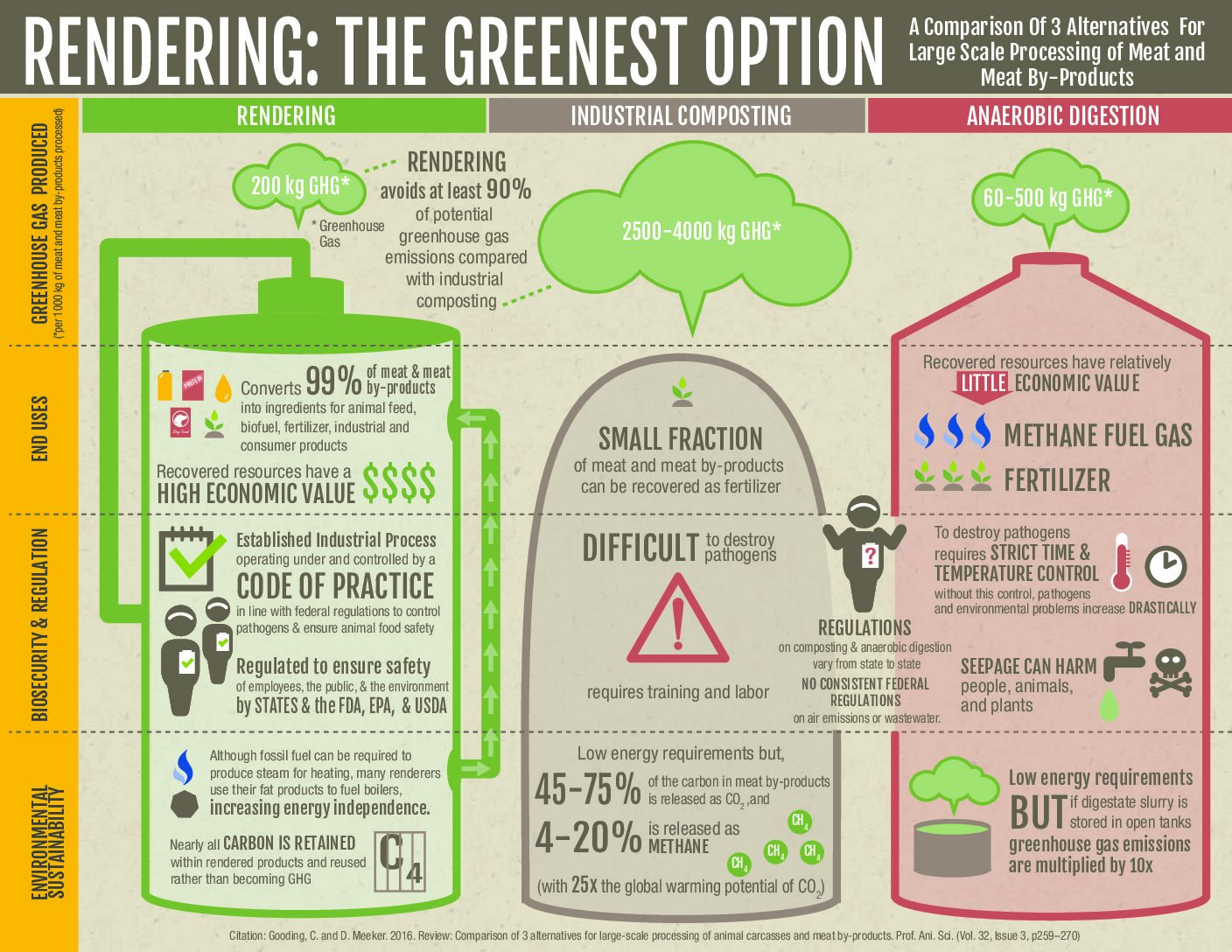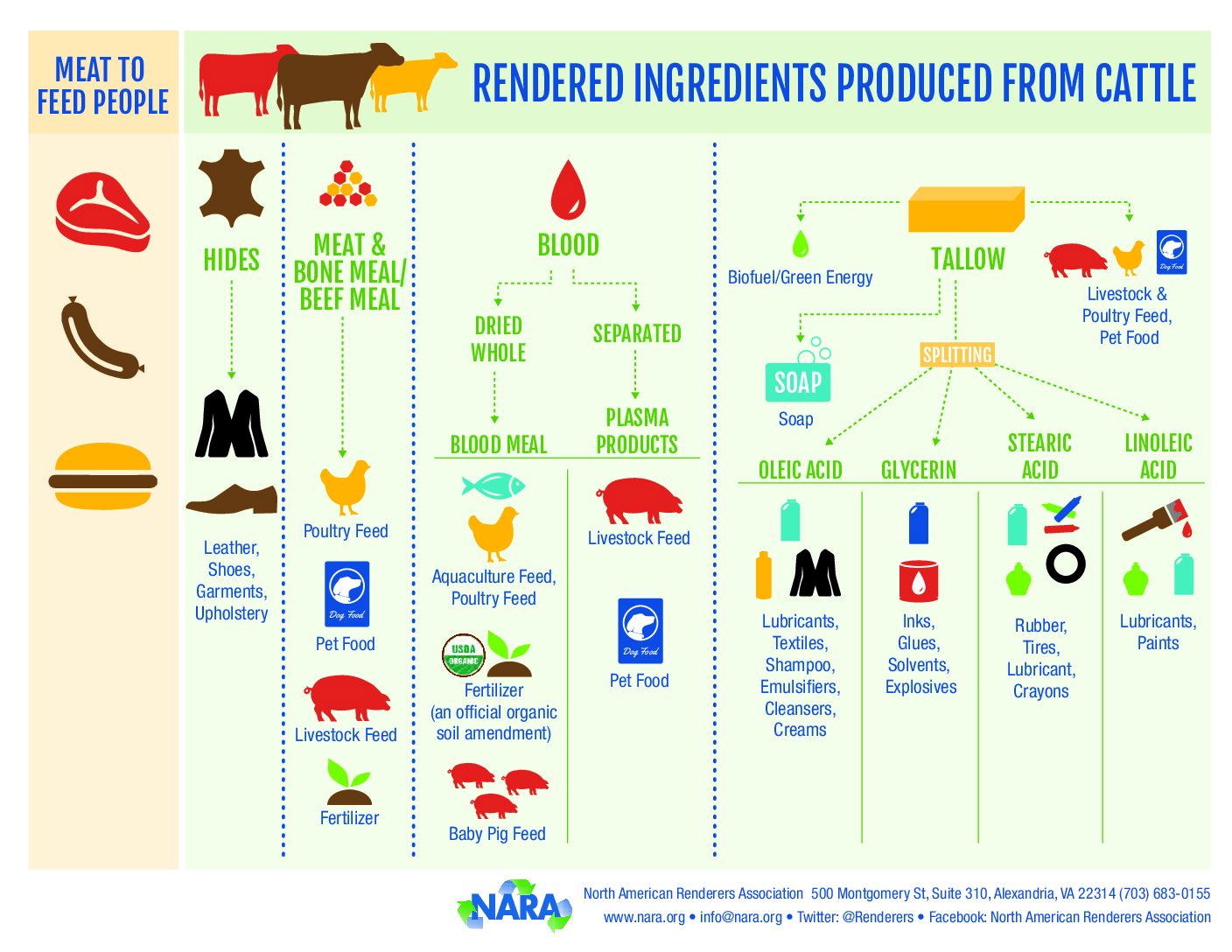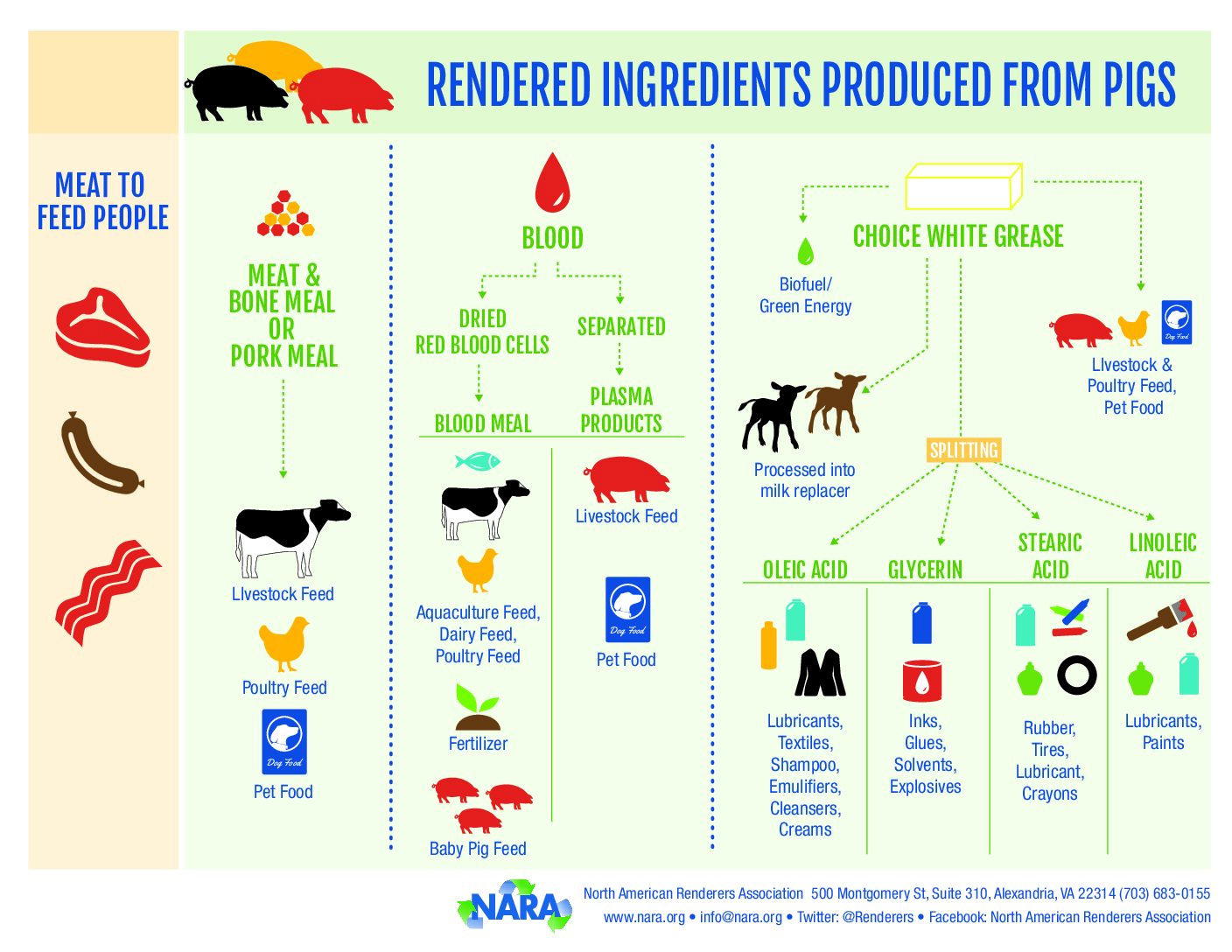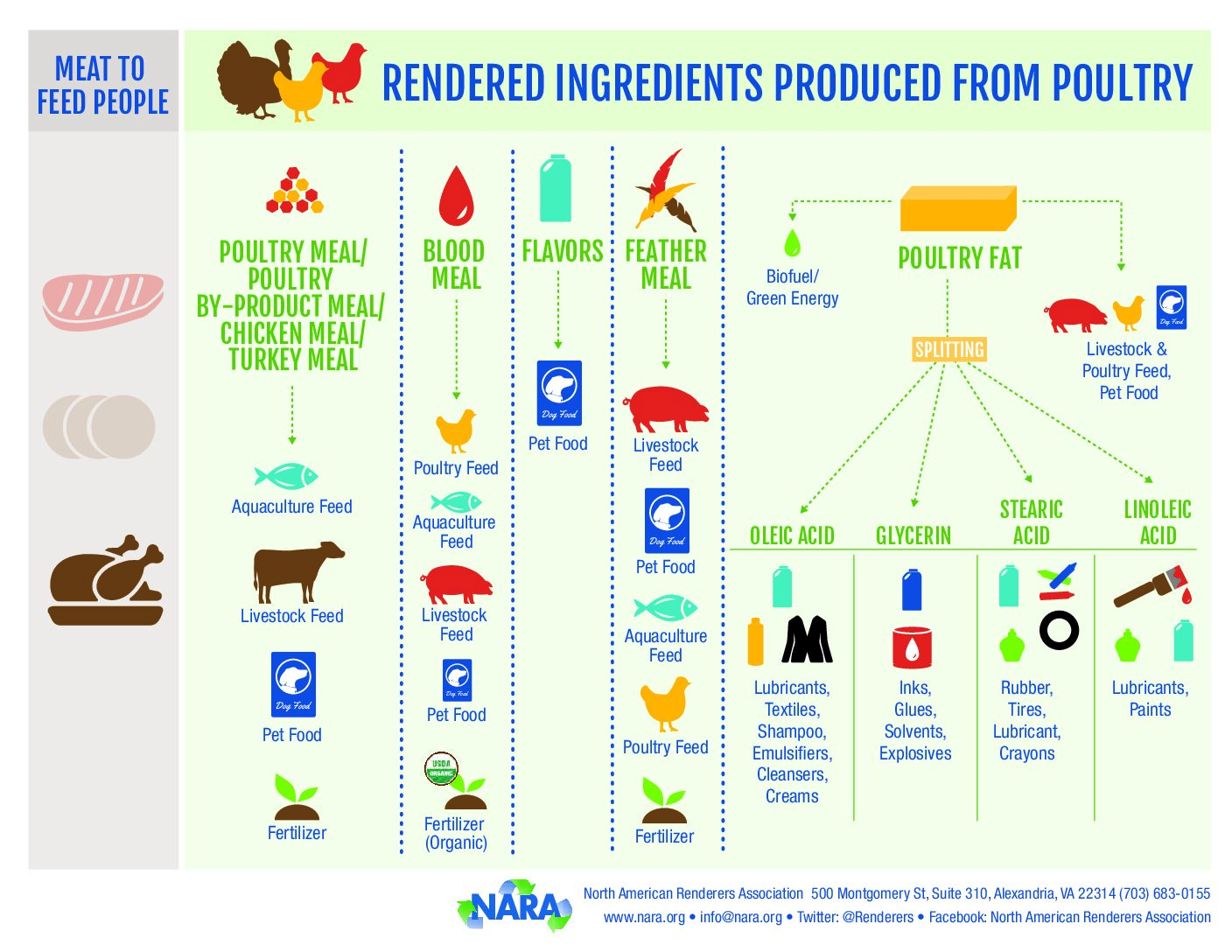Facts About Animal Rendered Products
Meat rendering plays a vital role in environmental sustainability worldwide, and animal rendering statistics indicate that the industry is critical to the modern economy. The North American Renderers’ Association (NARA) focuses on providing resources and education, so industry members and the public understand rendering’s value in today’s society.
However, the facts about agricultural and animal rendering can speak for themselves. Take a look at these rendering statistics on how the industry meets vital environmental and food resourcing needs today.
1. Animal Rendering Is Recycling
The rendering of meat is the process of cooking and drying meat and/or other animal by-products not used for human consumption in order to recover fats and proteins. It reuses materials that would otherwise be discarded and repurposes them for various applications, such as fuel and livestock feed. It’s a highly sustainable solution to food waste, recycling meat processing leftovers for other essential uses, and saving landfill space.
The US rendering industry accounts for $10 billion in annual economic activity across the country, including rural America. It’s a vital part of the economy today, supporting a wide range of supply needs to meet consumer demand sustainably.
2. What Products Are Made From Rendered Animals?
An animal rendering fact you may find surprising is that people use rendered animal products every day in soaps, paints, varnishes, lubricants, caulking compounds, candles, cleaners, paints, polishes, rubber products, plastics, fertilizers, and even explosives. Many people just do not realize how many ways these products made with rendered goods can be valuable for other applications. Renderers use materials such as fats, proteins, and oils to create all these products consumers need in everyday life.
3. Rendering Is “The Original Recycling”
For hundreds of years, renderers have been recycling unwanted meat into animal food and fertilizer used to feed and grow the next generation of food. It’s a classic and eco-friendly way to turn discarded animal co-products, or by-products, into valuable materials for other applications.
4. The Meat Rendering Process Is Good for Animal Health
Rendering produces valuable fats and proteins that improve nutrition in foods used by consumers and farmers to feed their pets as well as livestock, poultry, and fish. The nutrients derived from animal by-products used in rendering can help keep pets, ranch animals, and other livestock healthy.
5. Humans Don’t Like Them, Animals NEED Them
The unwanted leftovers, like organ meats, used to produce rendered end products contain valuable fats and proteins filled with vitamins and minerals that animals crave and need to maintain their health and nutrition. By taking advantage of the nutrients in these items that would otherwise be discarded, renderers can provide helpful supplements for animal feed and pet food.
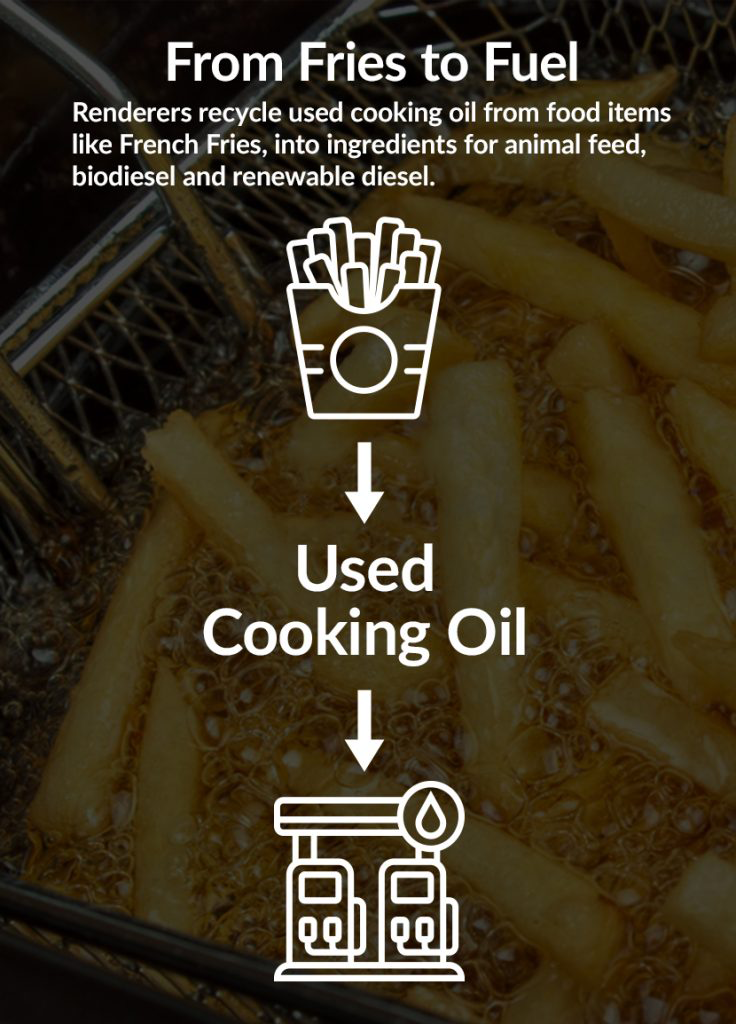 6. Recycling From Restaurants
6. Recycling From Restaurants
Renderers collect the nation’s used restaurant cooking oils to clean and recycle them into ingredients for animal feed, and to be used in biodiesel and renewable diesel for cars, trucks, airplanes, and other equipment. As used cooking oil continues to provide a wide range of applications for fuel and other critical needs, renderers’ roles become increasingly vital to conserving and reusing this resource.
7. From Fries to Fuel
Renderers recycle roughly 1.6 billion pounds of used cooking oil from food items like French Fries into ingredients for animal feed, biodiesel, and renewable diesel. Without the essential services that an animal rendering plant offers, the valuable properties these used oils provide would be lost to landfills and other areas of disposal.
8. Rendering Is Green and Sustainable
All U.S. landfills would be full in four years without rendering, posing a serious public health threat. Upcycling of animal co-products sequesters at least five times as many greenhouse gas emissions as it emits. This process also conserves resources and reduces the demand for agricultural supplies, helping protect food security for the future and reducing strains on cropland.
Rendering meat yields far fewer emissions than landfilling or composting. Rendered products help animal agriculture and other customers reduce their environmental footprints and become more sustainable.
9. Rendered Products Are Clean and Safe
High cooking temperatures used in rendering ensure animal food and consumer protections against bacteria, viruses, and other safety hazards. Meeting customer needs for quality and safety is a high priority, and renderers of course meet regulations, such as the Food Safety Modernization Act (FSMA) from the Food and Drug Administration (FDA). Memberships in the Animal Protein Producers Industry (APPI) program and other leading organizations help establish trusted quality standards and controls across the industry.
10. Consumers Have Confidence
Renderers comply with all applicable federal, state, and local laws and regulations. They conduct hazard analyses, control food safety hazards, and use good manufacturing practices in their Rendering Code of Practice stewardship program. This Code of Practice fully complies with the Food and Drug Administration’s animal food safety rules under the Food Safety Modernization Act.
With these quality controls and strict process guidelines in place, consumers can have confidence in the safety of final products. The stewardship programs and stringent standards help ensure consistent quality among renderers and increase production standards visibility.
11. Volume In, Quality Out
Rendering is a high-volume, high-tech industry. U.S. renderers collect 56 billion pounds of raw materials a year and recycle them by cooking and drying them into 22 billion pounds of animal fats/oils and proteins. This enormous amount of material saves significant space in landfills and helps conserve vital food resources. After collection, these billions of pounds of raw materials are carefully processed and refined to deliver maximum quality output.
12. Skilled Workforce
Rendering plants have extensively trained workers who use high-tech controls to operate ultra-hot temperature cookers, centrifuges, and presses. Innovative technologies and best practices help maintain consistent standards with a highly skilled workforce able to implement them. Renderers have a high labor retention rate, and they continue to deliver high-quality, safe products that are sustainable long-term.
Renderers also have access to a wide range of training resources and other opportunities to help them continue improving processes and maximizing their positive impact on the environment.
Learn How NARA Supports the Rendering Industry
Animal rendering statistics demonstrate that the industry is critical to the economy, food production demand, and sustainable practices today. NARA offers extensive resources and a network of industry-specific expertise to help further awareness about agricultural rendering facts.
For more information on NARA’s services and membership opportunities, consider joining now.
Rendering Infographics
A fast and easy way to learn about our industry
Click the thumbnails to download the PDFs
